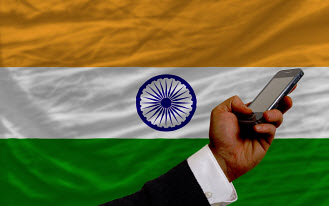Developers show faith in wearable technology
Mobile games developers are beginning to show a great deal of interest in wearable technology. Google Glass and Samsung Galaxy Gear have yet to attract the enthusiasm of consumers, but game developers are keen to make new products for these platforms. Glass, in particular, has managed to establish a following among consumers despite the fact that it is not yet available. Game developers have been rushing to make applications for the platform in order to take advantage of what could be the next big thing to come to the consumer electronics realm.
Wearable technology could change the mobile space
Glu Mobile, a prominent developer of mobile games, compares the potential of wearable technology to that of the iPhone when it was first launched. The iPhone received a great deal of hype before its official launch and went on to revolutionize the mobile space, especially where applications are concerned. Wearable technology may have a similar impact on the mobile space, but it is impossible to tell for certain whether or not this will be the case.
Mobile games on Glass being released in January
 Mobile games for Google Glass are already scheduled for launch later this month, but Glass itself has not yet been officially released. Currently, only a few thousand developers have access to the platform. Developer units were issued in order to get developers more comfortable with the platform and understand its capabilities and limitations. Game developers have praised Glass’ use of augmented reality as well as its other features.
Mobile games for Google Glass are already scheduled for launch later this month, but Glass itself has not yet been officially released. Currently, only a few thousand developers have access to the platform. Developer units were issued in order to get developers more comfortable with the platform and understand its capabilities and limitations. Game developers have praised Glass’ use of augmented reality as well as its other features.
Some challenges may lie ahead for mobile games on wearable platforms
Mobile games and wearable technology may go hand-in-hand. These games are well liked because they can be played anywhere and at any time. Technology like Glass compliments this feature, allowing users to play mobile games whenever they like. The problem, however, resides in how a Glass user will actually control their mobile games. If voice control is the only option, mobile games may soon become more of an annoyance, especially for commuters, than a source of entertainment.
The Reserve Bank of India has released a report that indicated that they had expected faster uptake.
According to the most recent Financial Stability Report from the Reserve Bank of India, the uptake of Indian mobile payments and banking has been promising, and yet considerably slower than had been expected over the span of the last three years.
The only banks in the country that can offer services over smartphones and tablets are those that are licensed.
According to the Central Bank in the country, in order to be able to offer Indian mobile paymentshttp://www.mobilecommercepress.com/mobile-banking-rise-australia/853413/, the institutions that wish to provide them to consumers must not only have a license from the Reserve Bank of India, but it must also be supervised by that agency. At the time of the report, there were 78 banks – including a number of them that are regional rural banks, as well as urban co-ops – that had been given the necessary permissions for offering these services.
Many are continuing to see a massive amount of potential from Indian mobile payments.
The Financial Stability Report claimed that using smartphones and tablets for banking offers people in India the greatest opportunity for financial inclusion that has ever been available. The report explained that “Helped by the rapid spread of use of mobile telephony, the growth in mobile banking has been encouraging over last three years.”
That said, it also pointed out that the growth and the overall acceptance of using these smartphone based services as a “channel for accessing banking services” has been much lower than had been anticipated.
Aside from the low awareness and adoption levels, there are also challenges in the industry regarding more rapid growth include the fact that banks aren’t capable of connecting bank account numbers with cell phone numbers, and there is a lack of compatibility between the apps and the devices that people are actually using in the country. There is also a lack of partnerships and models for sharing revenue between network operators and the banks, themselves.
Finally, Indian mobile payments have also been held back by the challenges in obtaining a USSD (Unstructured Supplementary Service Data) channel that is in operation for the purpose.
 Mobile games for Google Glass are already scheduled for launch later this month, but Glass itself has not yet been officially released. Currently, only a few thousand developers have access to the platform. Developer units were issued in order to get developers more comfortable with the platform and understand its capabilities and limitations. Game developers have praised Glass’ use of augmented reality as well as its other features.
Mobile games for Google Glass are already scheduled for launch later this month, but Glass itself has not yet been officially released. Currently, only a few thousand developers have access to the platform. Developer units were issued in order to get developers more comfortable with the platform and understand its capabilities and limitations. Game developers have praised Glass’ use of augmented reality as well as its other features.

